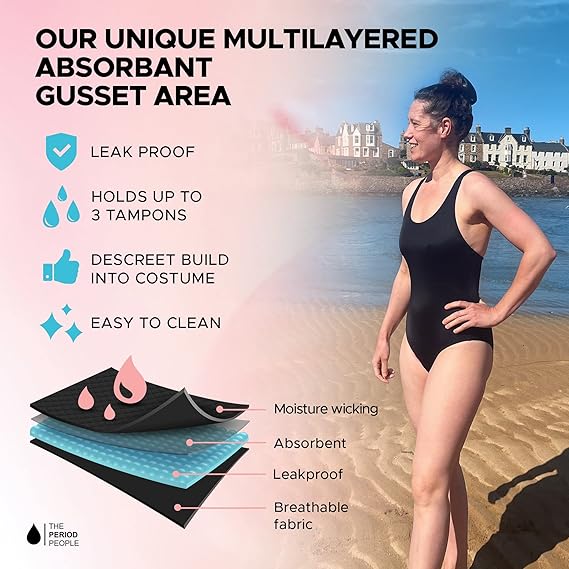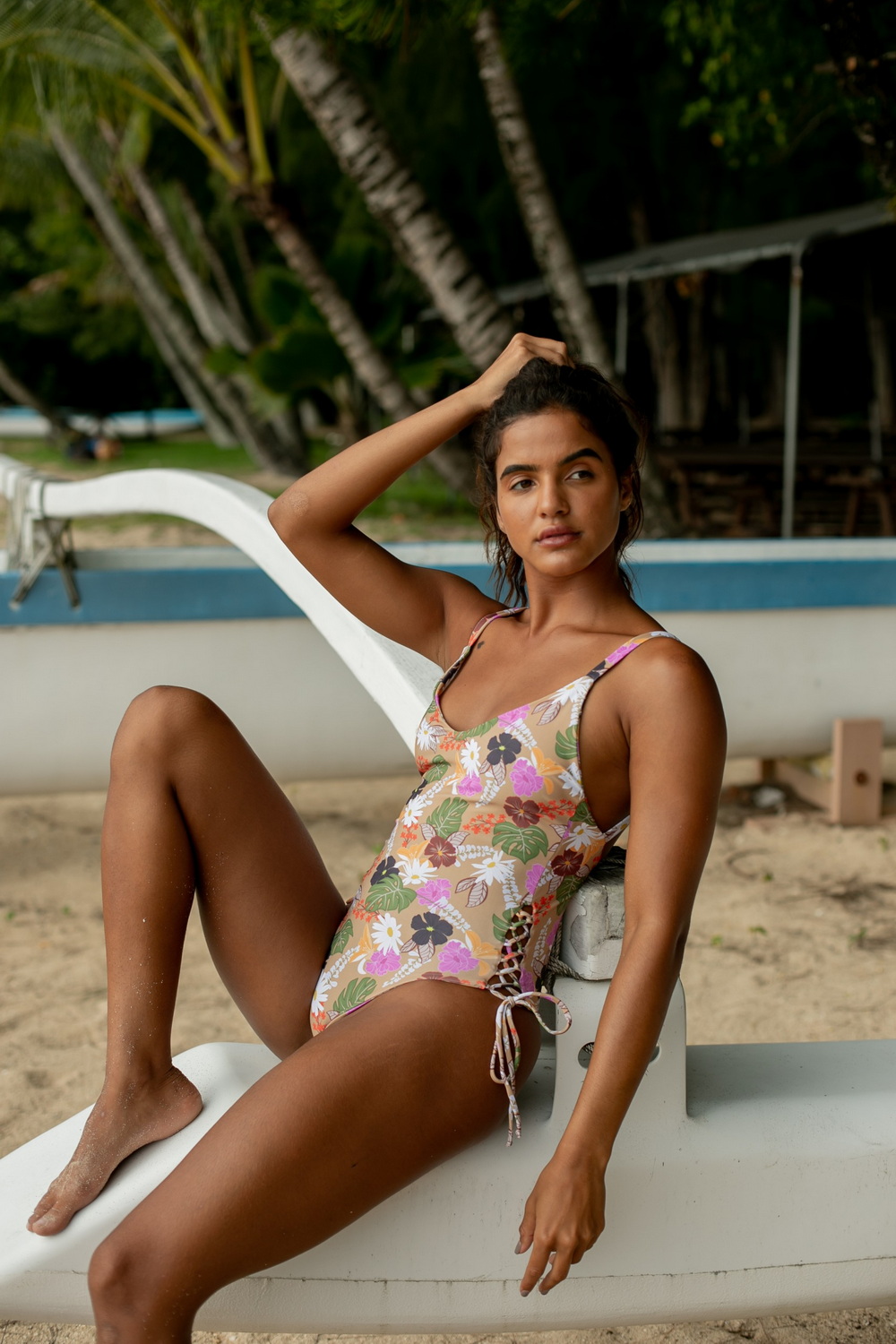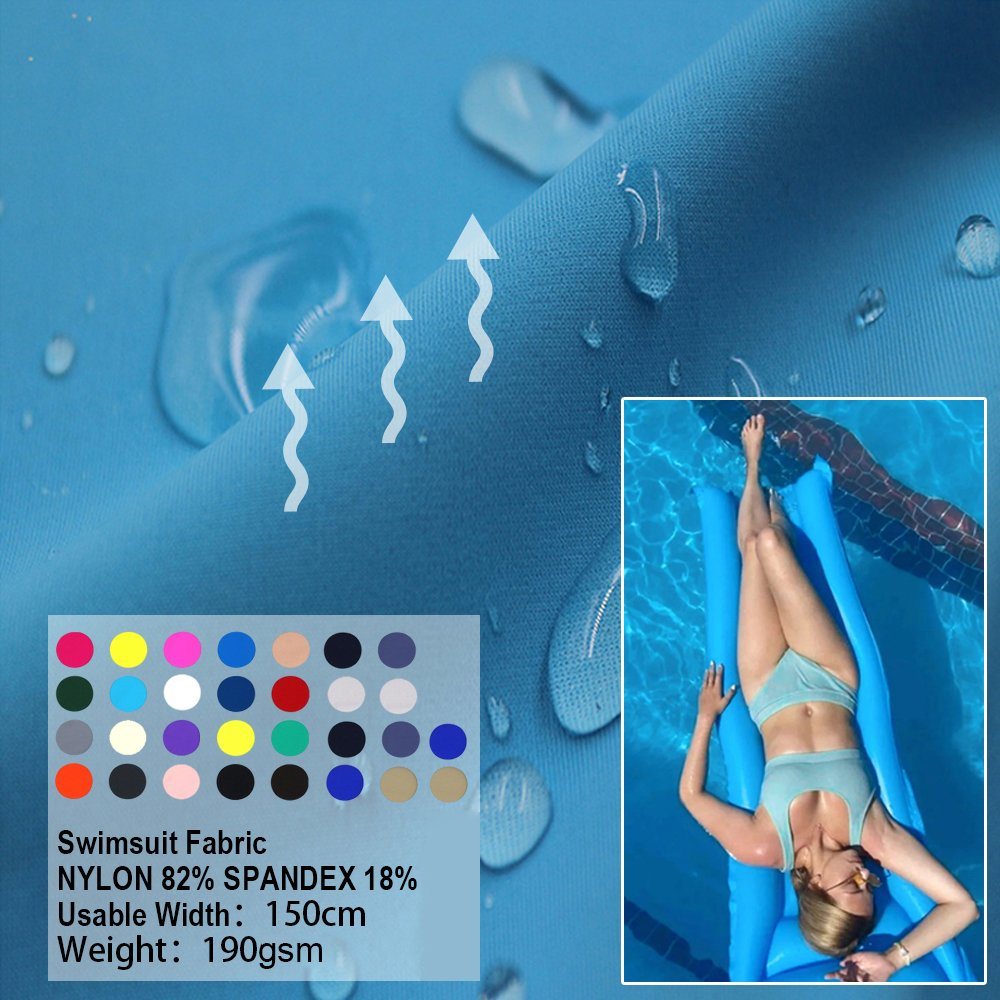Content Menu
● Introduction
● Understanding Waterproof Swimwear
>> What Does Waterproof Mean?
>> Common Materials Used in Waterproof Swimwear
>> Benefits of Waterproof Swimwear
● Types of Waterproof Swimwear
>> Full-body Swimsuits
>> Swim Shorts and Trunks
>> Swim Caps and Accessories
>> Comparison of Different Styles and Their Waterproof Features
● The Technology Behind Waterproof Swimwear
>> Fabric Technology
>> Manufacturing Processes That Enhance Waterproofing
>> Innovations in Swimwear Technology
● Common Misconceptions About Waterproof Swimwear
>> Waterproof vs. Quick-Drying
>> Maintenance and Care of Waterproof Swimwear
>> Myths About Comfort and Fit
● Choosing the Right Waterproof Swimwear
>> Factors to Consider
>> Tips for Selecting the Best Waterproof Swimwear
>> Recommendations for Brands and Products
● Conclusion
● Call to Action
● Frequently Asked Questions
>> 1. What is the difference between waterproof and water-resistant swimwear?
>> 2. Can I wear waterproof swimwear in a swimming pool?
>> 3. How do I care for my waterproof swimwear?
>> 4. Is waterproof swimwear suitable for all water activities?
>> 5. What should I look for when buying waterproof swimwear?
Introduction
Swimwear is an essential part of aquatic activities, whether for leisure, competition, or professional use. It encompasses a variety of garments designed specifically for swimming, diving, and other water-related sports. As the demand for swimwear continues to grow, so does the need for specialized features that enhance performance and comfort. One such feature is waterproofing, which has become increasingly popular among swimmers and water sports enthusiasts. This article explores the concept of waterproof swimwear, its benefits, types, technology, misconceptions, and tips for choosing the right swimwear for your needs.
Article: Waterproof Swimwear in Hawaii

Understanding Waterproof Swimwear
What Does Waterproof Mean?
Waterproof refers to the ability of a material to resist water penetration. In the context of swimwear, it is crucial to distinguish between waterproof and water-resistant. While waterproof materials prevent water from passing through, water-resistant fabrics can repel water to some extent but may not be entirely impermeable. Understanding this difference is vital for consumers looking for swimwear that meets their specific needs.
Common Materials Used in Waterproof Swimwear
Waterproof swimwear is typically made from specialized fabrics that provide a barrier against water. Some of the most common materials include:
- Neoprene: A synthetic rubber that offers excellent insulation and flexibility, making it ideal for wetsuits and other swimwear designed for colder waters.
- Polyurethane: Often used in combination with other fabrics, polyurethane provides a waterproof layer that is lightweight and comfortable.
- Polyester and Nylon Blends: These materials can be treated with waterproof coatings to enhance their water-repelling properties while maintaining breathability.
Benefits of Waterproof Swimwear
Investing in waterproof swimwear comes with several advantages:
- Enhanced Performance in Water: Waterproof swimwear allows for greater freedom of movement and reduces drag, enabling swimmers to perform at their best.
- Protection Against Cold Water: For those who swim in colder environments, waterproof materials help retain body heat, making the experience more comfortable.
- Durability and Longevity: High-quality waterproof swimwear is designed to withstand the rigors of water exposure, ensuring that it lasts longer than traditional swimwear.

Types of Waterproof Swimwear
Full-body Swimsuits
Full-body swimsuits are designed to cover the entire body, providing maximum insulation and protection. They are particularly popular among competitive swimmers and triathletes, as they reduce drag and enhance buoyancy. Many full-body swimsuits are made from neoprene or other waterproof materials, making them suitable for various water conditions.
Swim Shorts and Trunks
Swim shorts and trunks are versatile options for both casual and competitive swimmers. While not all swim shorts are waterproof, many brands offer models made from water-resistant or waterproof fabrics. These options are ideal for recreational swimming, beach activities, and water sports.
Swim Caps and Accessories
Swim caps are often overlooked when discussing waterproof swimwear, but they play a crucial role in keeping hair dry and reducing drag. Many swim caps are made from silicone or latex, which are inherently waterproof materials. Additionally, waterproof accessories such as goggles and earplugs can enhance the overall swimming experience.
Comparison of Different Styles and Their Waterproof Features
When choosing waterproof swimwear, it is essential to consider the specific features of each style. Full-body swimsuits provide the most coverage and insulation, while swim shorts offer more freedom of movement. Swim caps and accessories can complement these garments, ensuring a comprehensive approach to waterproofing.
The Technology Behind Waterproof Swimwear
Fabric Technology
The development of waterproof swimwear has been significantly influenced by advancements in fabric technology. Neoprene, for example, is known for its excellent insulation properties, making it a popular choice for wetsuits. Manufacturers are continually exploring new materials and blends to enhance the waterproof capabilities of swimwear.

Manufacturing Processes That Enhance Waterproofing
The manufacturing process plays a crucial role in the effectiveness of waterproof swimwear. Techniques such as seam sealing, where seams are bonded rather than stitched, help prevent water from seeping through. Additionally, applying waterproof coatings to fabrics can enhance their water-repelling properties without compromising breathability.
Innovations in Swimwear Technology
The swimwear industry is constantly evolving, with new technologies emerging to improve performance and comfort. Innovations such as hydrophobic coatings, which repel water at a molecular level, and smart fabrics that adapt to temperature changes are becoming more common. These advancements not only enhance the waterproof qualities of swimwear but also improve overall user experience.
Common Misconceptions About Waterproof Swimwear
Waterproof vs. Quick-Drying
One common misconception is that waterproof swimwear is also quick-drying. While waterproof materials prevent water from entering, they may not dry quickly once wet. Quick-drying swimwear, on the other hand, is designed to wick moisture away from the body and dry rapidly. It is essential to understand these differences when selecting swimwear for specific activities.
Maintenance and Care of Waterproof Swimwear
Another misconception is that waterproof swimwear requires no special care. In reality, proper maintenance is crucial to prolonging the life of these garments. Rinsing swimwear after use, avoiding harsh detergents, and storing it in a cool, dry place can help maintain its waterproof properties.
Myths About Comfort and Fit
Some consumers believe that waterproof swimwear is uncomfortable or restrictive. However, advancements in fabric technology have led to the development of lightweight and flexible materials that provide a comfortable fit. It is essential to try on different styles and sizes to find the best fit for individual preferences.

Choosing the Right Waterproof Swimwear
Factors to Consider
When selecting waterproof swimwear, several factors should be taken into account:
- Activity Type: Different activities may require different styles of swimwear. For example, competitive swimmers may prefer full-body suits, while recreational swimmers might opt for swim shorts.
- Body Type: Finding the right fit is crucial for comfort and performance. Consider body shape and size when choosing swimwear.
- Water Conditions: The temperature and type of water (ocean, pool, lake) can influence the choice of swimwear. Wetsuits are ideal for colder waters, while lighter options may be suitable for warmer conditions.
Tips for Selecting the Best Waterproof Swimwear
- Try Before You Buy: Always try on swimwear to ensure a proper fit. Look for styles that allow for movement without being too tight.
- Read Reviews: Customer reviews can provide valuable insights into the performance and comfort of specific swimwear brands and styles.
- Consult Experts: If unsure, seek advice from professionals or knowledgeable staff at swimwear retailers.
Recommendations for Brands and Products
Several brands are known for their high-quality waterproof swimwear. Some popular options include:
- Speedo: Renowned for its competitive swimwear, Speedo offers a range of waterproof options for various activities.
- TYR: Known for its innovative designs and durable materials, TYR provides swimwear suitable for both training and leisure.
- O'Neill: Specializing in wetsuits and surf gear, O'Neill offers a variety of waterproof swimwear for water sports enthusiasts.
Conclusion
In conclusion, waterproof swimwear is an essential investment for anyone involved in aquatic activities. Understanding the differences between waterproof and water-resistant materials, the benefits of various styles, and the technology behind swimwear can help consumers make informed choices. As the industry continues to evolve, staying updated on the latest innovations will ensure that swimmers can enjoy their time in the water comfortably and effectively.
Call to Action
We invite readers to share their experiences with waterproof swimwear. Have you found a particular brand or style that works best for you? If you're interested in high-quality swimwear manufacturing, feel free to contact our factory for OEM services tailored to your brand's needs.
Frequently Asked Questions
1. What is the difference between waterproof and water-resistant swimwear?
- Waterproof swimwear completely prevents water from entering, while water-resistant swimwear can repel water but may not be entirely impermeable.
2. Can I wear waterproof swimwear in a swimming pool?
- Yes, waterproof swimwear can be worn in swimming pools, but it is essential to rinse it afterward to remove chlorine and other chemicals.
3. How do I care for my waterproof swimwear?
- Rinse your swimwear after each use, avoid harsh detergents, and store it in a cool, dry place to maintain its waterproof properties.
4. Is waterproof swimwear suitable for all water activities?
- Waterproof swimwear is ideal for various activities, including swimming, surfing, and diving, but the specific style may vary based on the activity.
5. What should I look for when buying waterproof swimwear?
- Consider factors such as activity type, body type, water conditions, and read reviews to find the best fit and style for your needs.





































